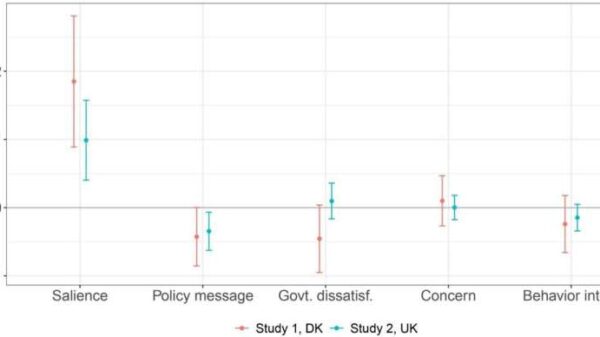The onboarding of new customers in the financial sector has undergone a significant transformation with the adoption of electronic Know Your Customer (eKYC) systems. As banks and financial institutions increasingly prioritize customer experience and risk management, eKYC technology has emerged as a critical solution for efficient identity verification.
Understanding the Shift to Digital Onboarding
Traditional onboarding processes have relied heavily on manual procedures involving face-to-face interactions and extensive documentation. For banks, this often meant lengthy background checks and physical interviews, which can be both time-consuming and inefficient. In contrast, the introduction of digital onboarding technology has streamlined these processes, enabling organizations to simplify and expedite customer verification.
The urgency for effective digital onboarding is not merely a matter of convenience; it directly impacts a company’s profitability. With evolving customer expectations, businesses must adopt solutions that are both compliant and user-friendly. Today’s consumers are tech-savvy and prefer to conduct transactions quickly and conveniently, often from the comfort of their homes.
How eKYC Works
eKYC represents the digital evolution of customer identification and verification. This system utilizes advanced technology to securely authenticate customers by collecting their information electronically and comparing it against various databases. The eKYC process consists of several key steps designed to ensure accurate identity verification.
The initial step involves data collection, where customers provide essential identification details such as their name, address, date of birth, and identification numbers. This information can be submitted via mobile applications or online platforms, where customers receive guidance on securely uploading their documents.
Once the data is collected, the next phase is document verification. This step confirms the authenticity of the submitted identification documents through automatic comparisons with established databases to ensure that no fraudulent transactions have been reported. Optical character recognition (OCR) technology is often employed to extract and read the information from these documents.
Facial recognition technology plays a vital role in the eKYC process. Algorithms compare a customer’s selfie with their ID photo, analyzing various facial features to detect any discrepancies. This step is crucial in preventing identity fraud.
Liveness detection further enhances security during the onboarding process. By verifying that a customer is physically present and interacting with the system, this technology checks for signs of life, such as blinking and movement, to thwart spoofing attacks.
After successful identity verification, the system cross-references customer data with global databases, including watchlists and credit bureaus. This comprehensive analysis helps institutions assess potential risks before granting service access.
Compliance with regulations, such as Anti-Money Laundering (AML) and counter-terrorism financing (CTF) laws, is another critical component. Data obtained during the eKYC process must align with these regulations to avoid hefty fines for non-compliance.
Once all processes are completed, customers receive immediate approval, significantly enhancing their experience. This rapid onboarding not only fosters customer loyalty but also improves retention rates, as users are less likely to abandon cumbersome processes.
The Advantages and Challenges of eKYC Systems
The introduction of eKYC systems offers numerous advantages. The speed and convenience of the onboarding process are among the most significant benefits, reducing what once took weeks to mere minutes. Additionally, the automation of these processes leads to cost reductions as fewer personnel are required for operations, allowing companies to allocate resources more effectively.
Enhanced security is another key advantage. Biometric identification is considerably more secure than traditional methods, benefiting both organizations and their customers. Furthermore, eKYC systems are adaptable to regulatory changes, enabling financial institutions to remain compliant without overhauling their entire systems.
Despite these benefits, the implementation of eKYC systems presents challenges. Privacy concerns related to the management of sensitive information necessitate robust data encryption and adherence to regulations such as the General Data Protection Regulation (GDPR).
Moreover, organizations must address their dependence on technology, which can create hurdles in integrating eKYC systems with existing infrastructures. Financial costs associated with upgrading technology can also pose challenges.
User resistance is another potential obstacle, particularly among customers who may not be technologically inclined. To mitigate this, organizations need to invest in user-friendly interfaces and training programs.
The Future of eKYC Technology
Looking ahead, the future of eKYC systems appears promising as digital solutions continue to evolve. Innovations in artificial intelligence (AI) and machine learning (ML) are expected to enhance identity verification processes, allowing for even more precise evaluations. The advancement of biometric technologies will also contribute to greater reliability and security.
The integration of blockchain technology could further revolutionize eKYC by creating decentralized identity verification systems. This would not only improve security but also empower customers with greater control over their personal data, minimizing the risk of data breaches.
In conclusion, eKYC systems and other digital onboarding technologies are set to redefine the customer onboarding experience for banks and other sectors requiring robust identity verification. By streamlining processes, enhancing security, and ensuring regulatory compliance, eKYC presents valuable opportunities for organizations in an increasingly competitive market. Companies that embrace eKYC technology will likely lead the charge in delivering superior service and maintaining customer trust in the digital age.




































































